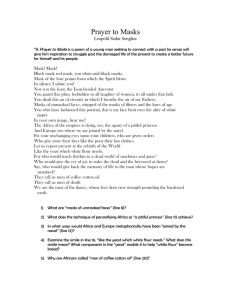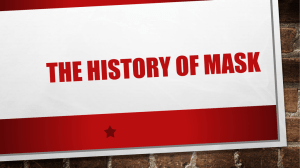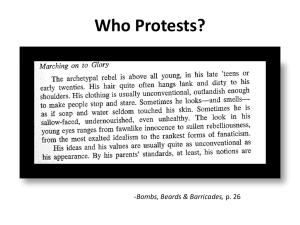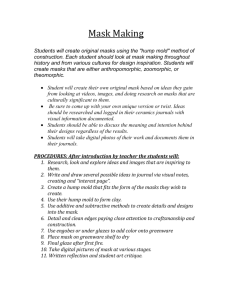What “Mask” Do You Wear?
advertisement
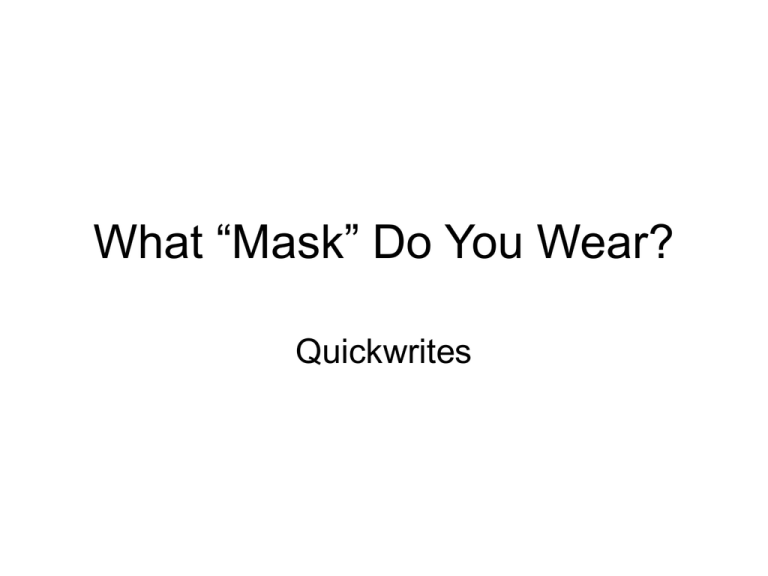
What “Mask” Do You Wear? Quickwrites Write for five minutes on the following topic: • When do you act completely like yourself? • When do you change how you are acting? • Is it your physical environment? • Is it the people around you? • Is it your mood? • Write for the complete five minutes, without stopping. If you cannot think of anything else to write, write the phrase “I don’t know what to write” until something comes to you. Your hand should not stop writing until the timer goes off. Our Masks • Most of us have had to wear a “mask” at one point or another—we were trying to impress someone, or behave, or act more excited than we were. • In the next few slides, we will be dealing with actual, physical masks. But don’t worry, we will be coming back to our metaphorical masks soon! Masks • In the next few slides, you will see masks from around the world. • For each mask, do the following: • List what you SEE • List the EMOTION that you feel when looking at the mask—what emotion do you think the mask maker was trying to evoke? • WHY you believe that this is the emotion the creator meant for you to feel. What is your proof? Native American Mask Ancient Greek Funerary Mask African (Igbo) Mask/ Headdress Japanese “Noh” Theater Mask What does this all mean? • Everything that you just shared and described is symbolic. Color, facial expression, pattern, material, texture, numbers depicted, characters…all of these are important ways to represent a culture’s beliefs and priorities. How does this tie in to what we are learning? • We will be reading “We Wear the Mask” by Paul Laurence Dunbar. You will need a pencil or pen, because we will be reading this ACTIVELY. • For the second reading, I want you to CIRCLE every word that you feel shows TONE. • For the third reading, I want you to UNDERLINE every word that you feel shows IMAGERY. Share • Which words did you think showed tone? • Which words did you feel showed imagery? • What is the author saying about masks? • Notice that this poem rhymes. Would the meaning be different if it did not rhyme? What does rhyme add to the author’s message?



